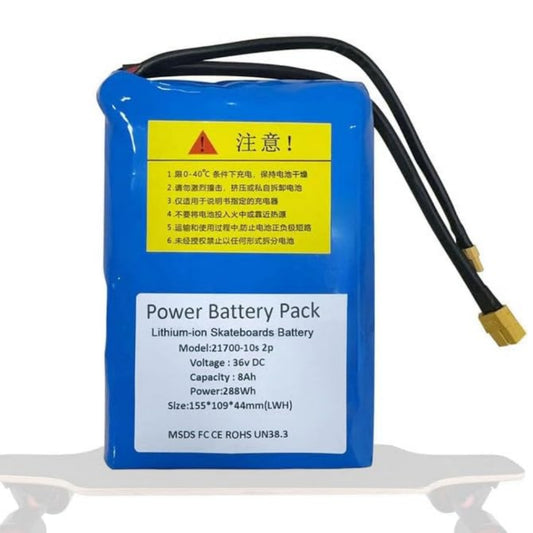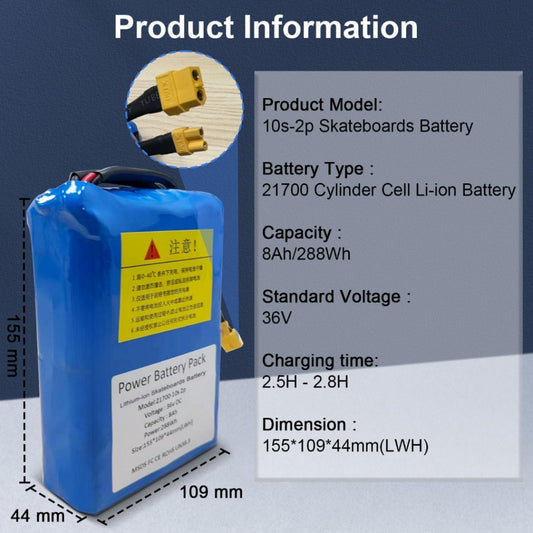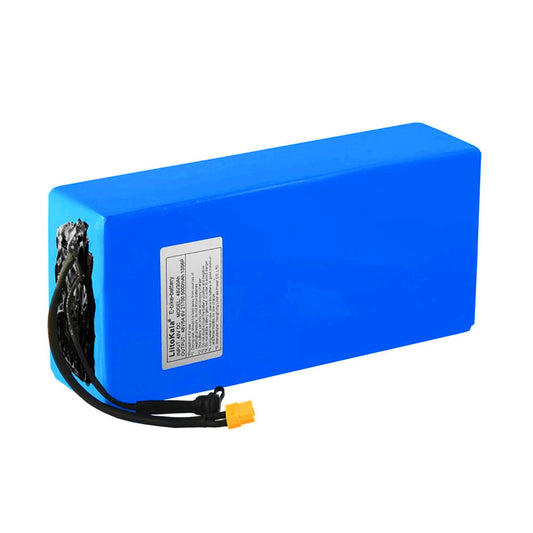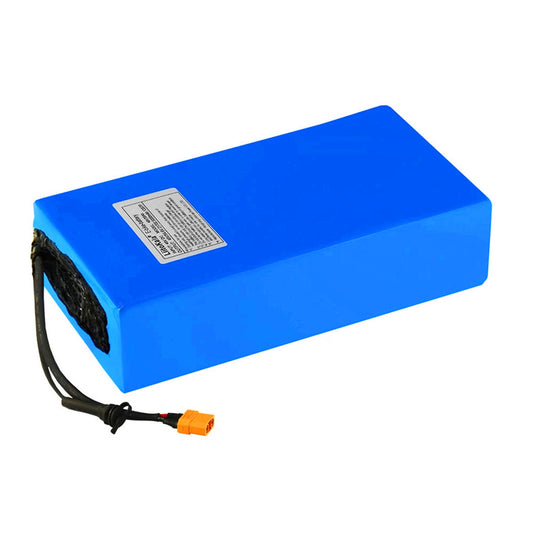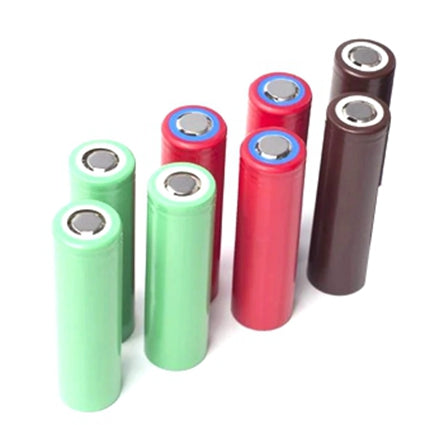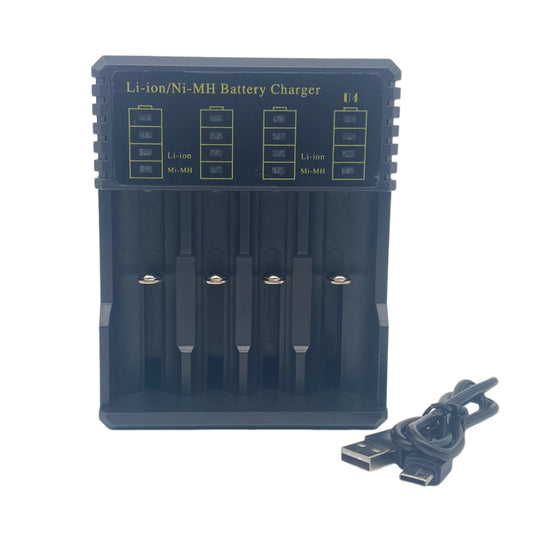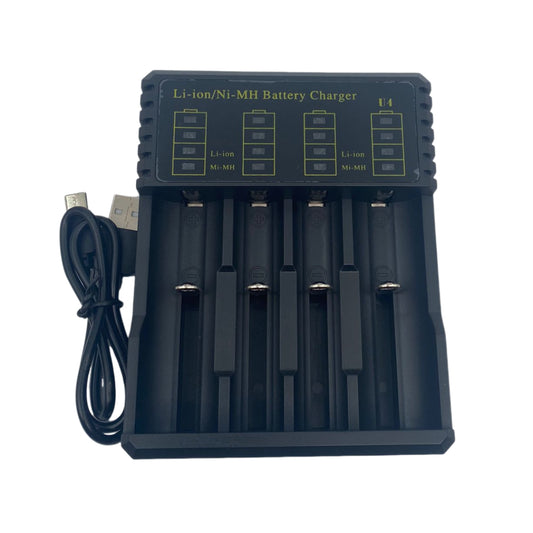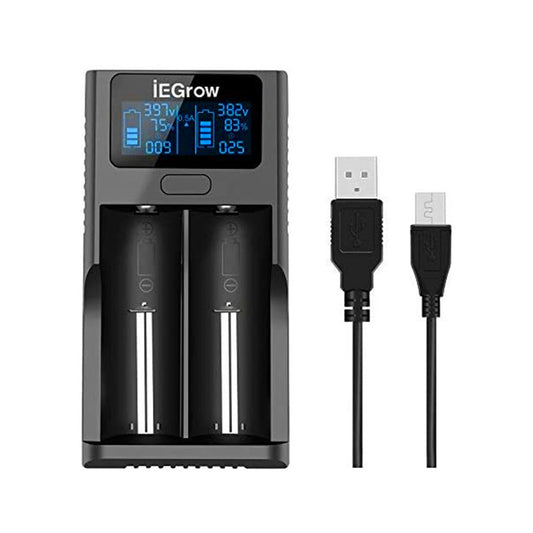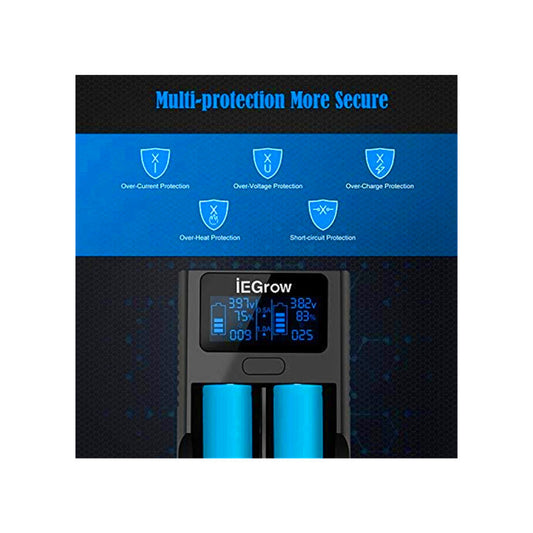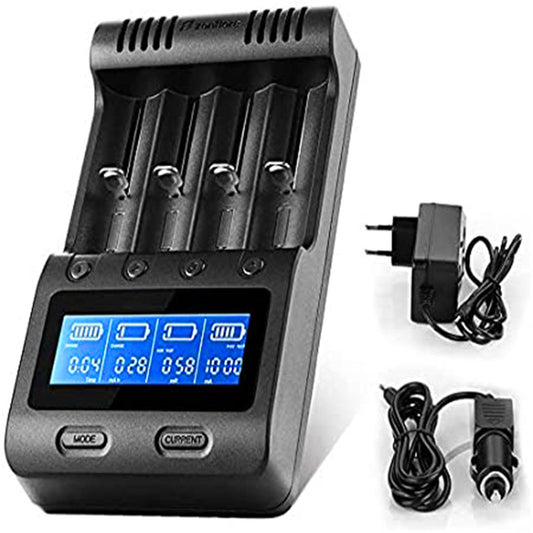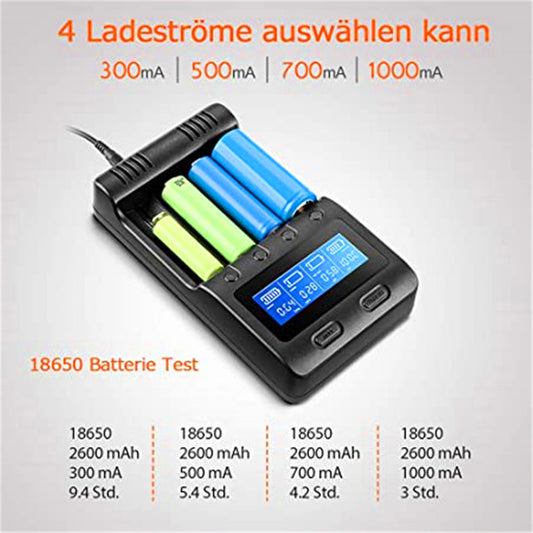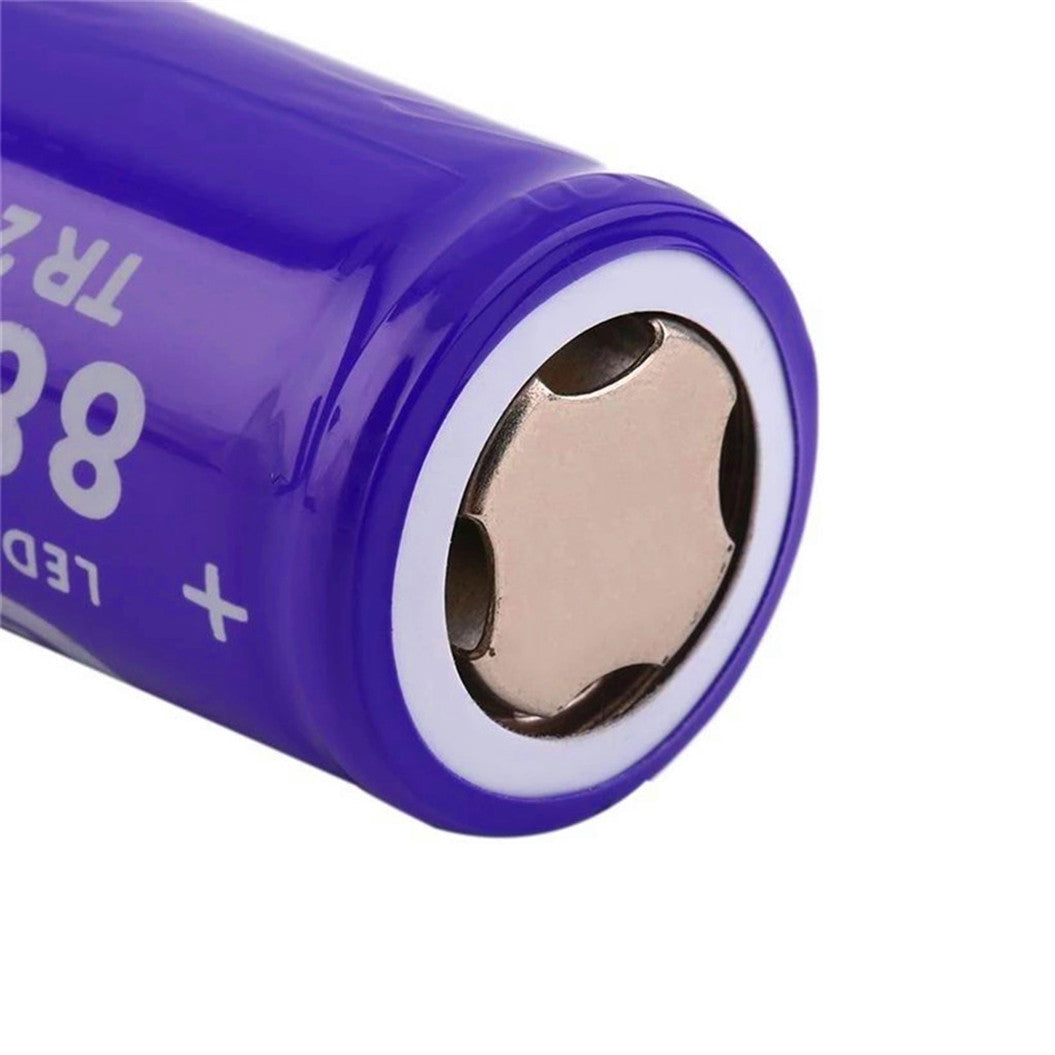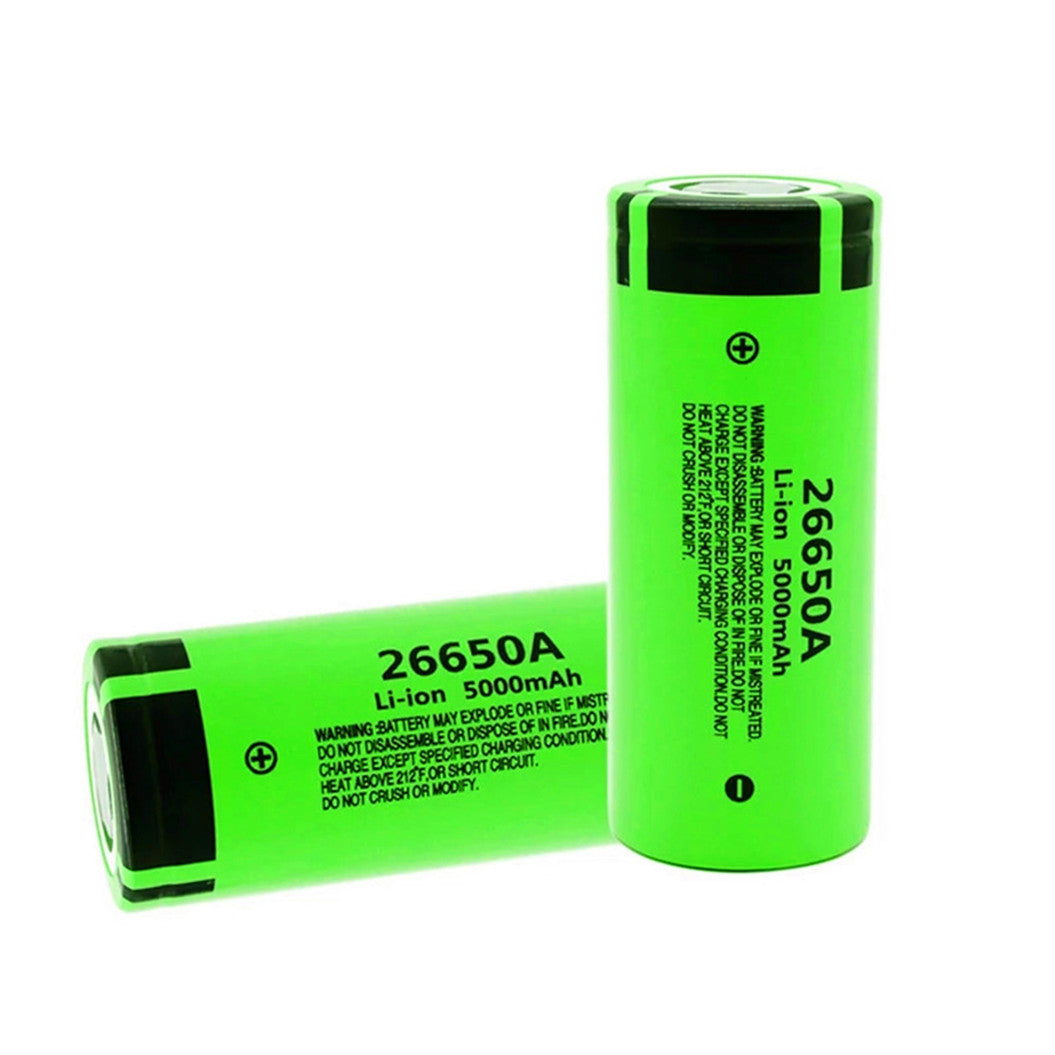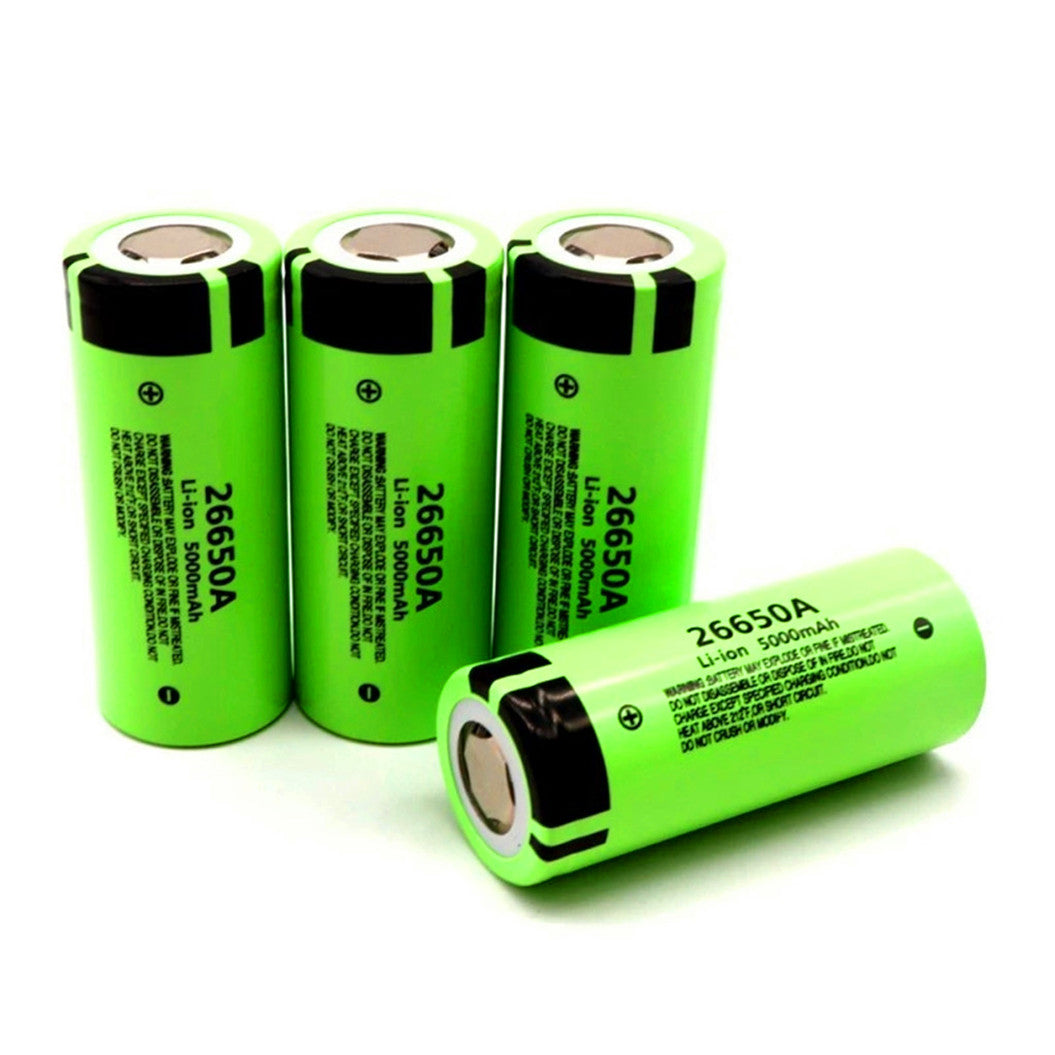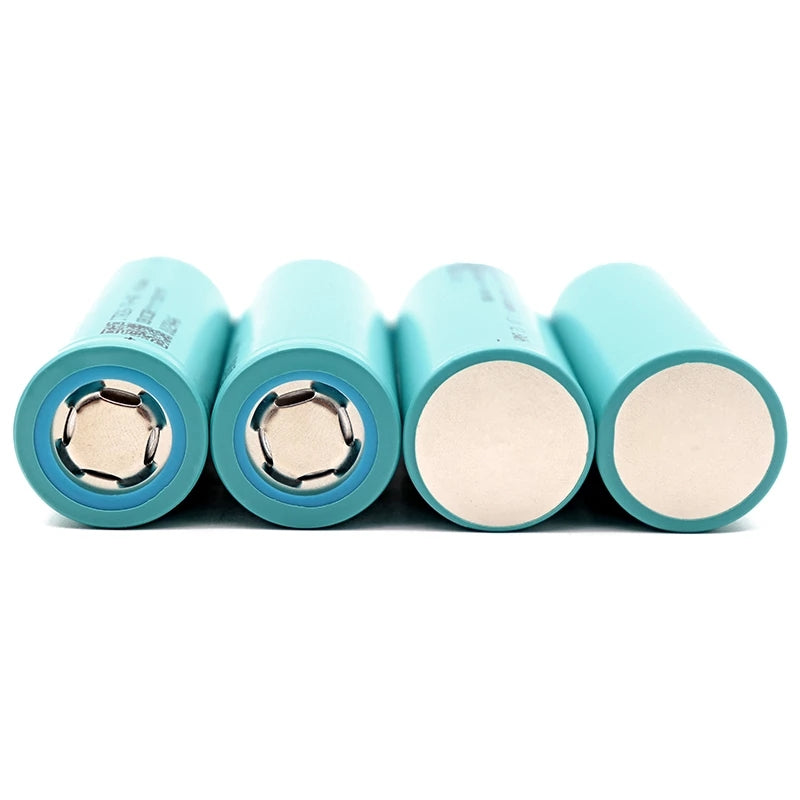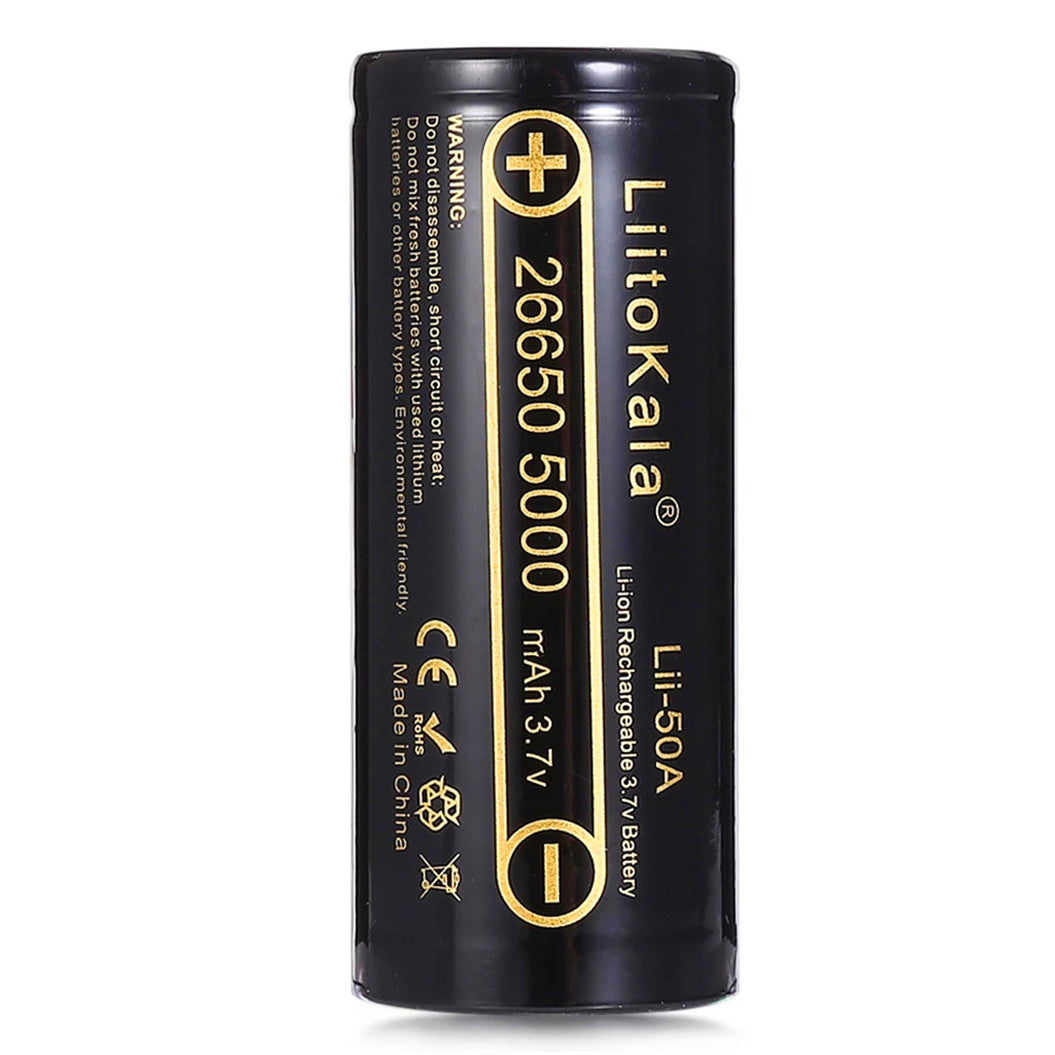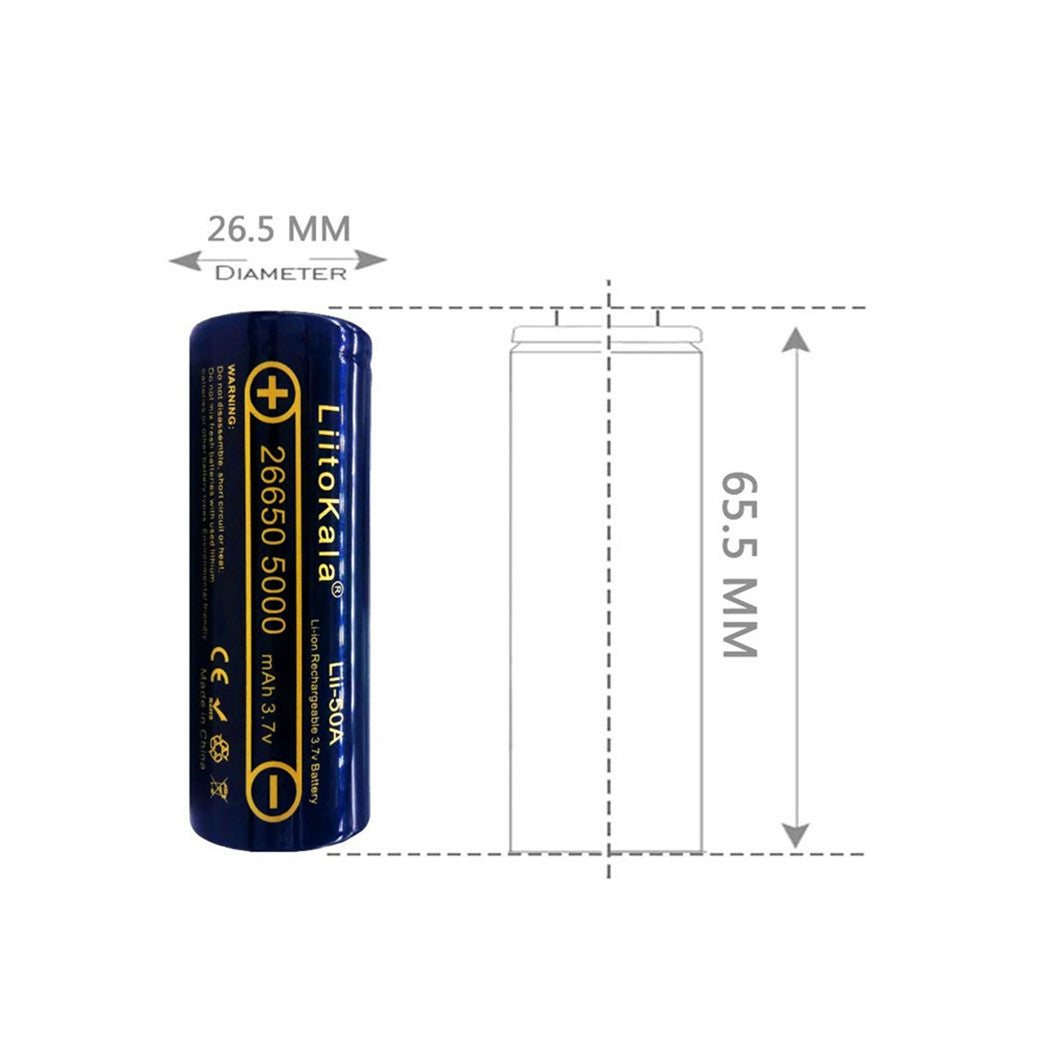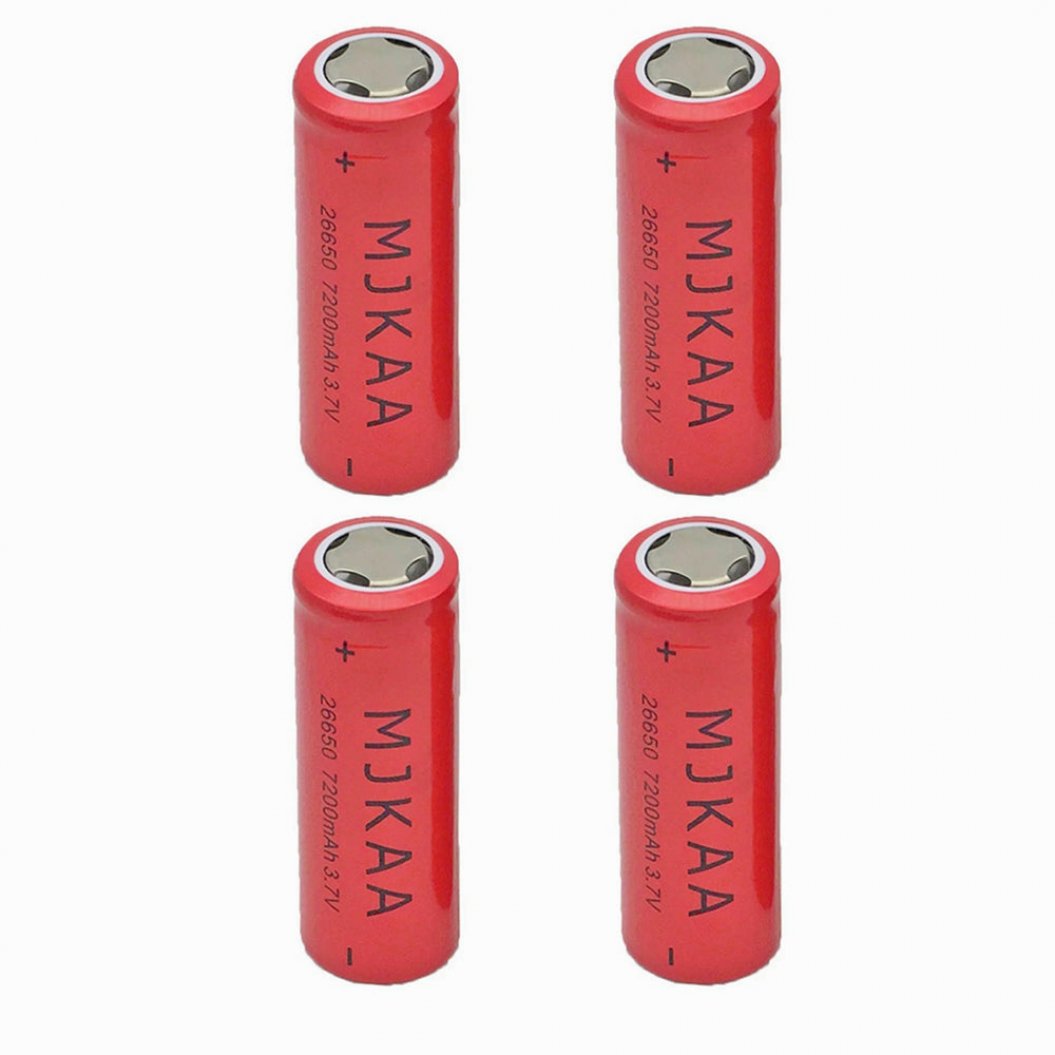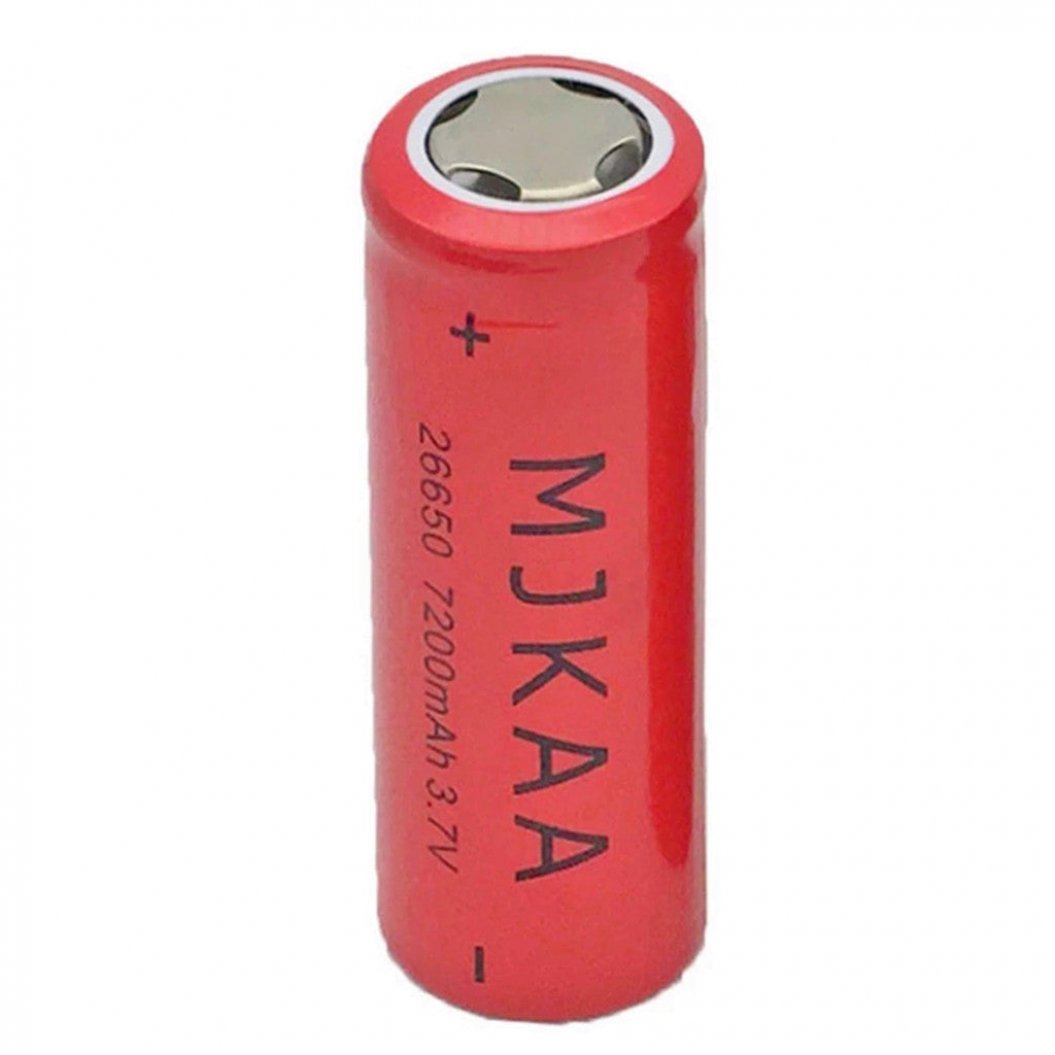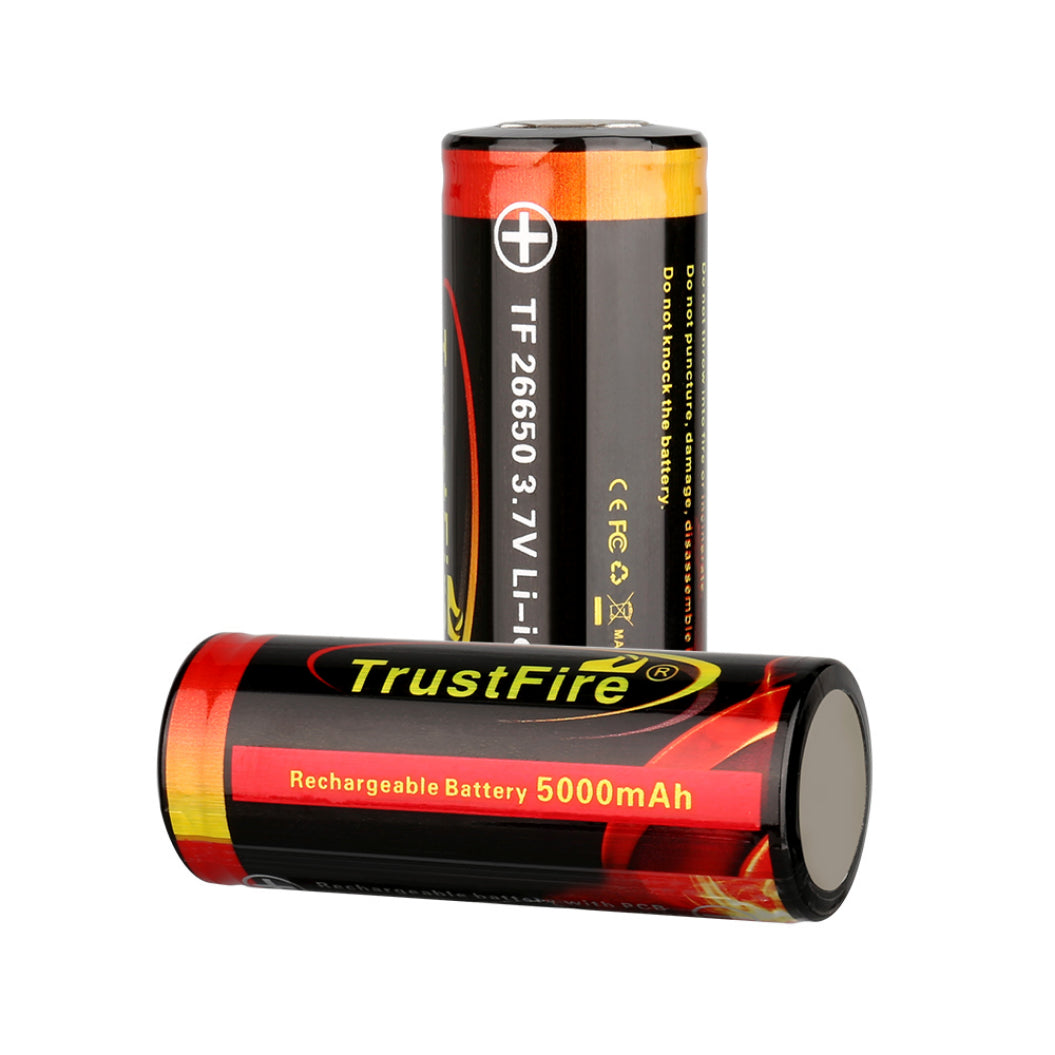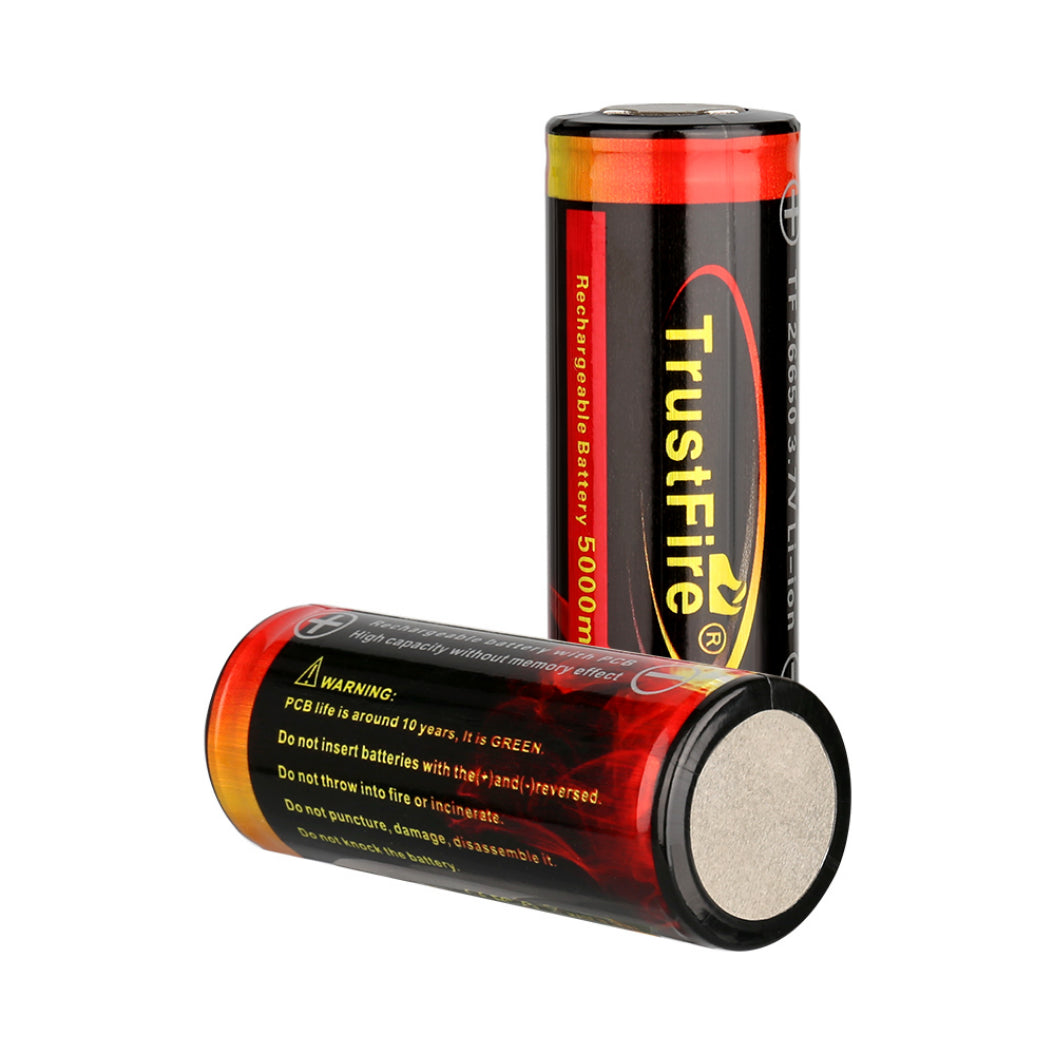-
Fornecedor:BATTERYINT
2 Peças de Bateria 26650 5000mAh - 5500mAh 3.7V Li-ion para Lanterna Power Bank
- Preço normal
- $12.99
- Preço normal
-
- Preço de saldo
- $12.99
- Preço unitário
- por
2 Peças de Bateria 26650 50... -
Fornecedor:BATTERYINT
2 Peças de Bateria Recarregável 26650 3.7V 8800mAh Li-Ion, Usada para Lanterna
- Preço normal
- $13.99
- Preço normal
-
- Preço de saldo
- $13.99
- Preço unitário
- por
2 Peças de Bateria Recarreg... -
Fornecedor:BATTERYINT
2 Peças de Bateria Li-Ion 26650A 3.7V 5000mAh
- Preço normal
- $15.99
- Preço normal
-
- Preço de saldo
- $15.99
- Preço unitário
- por
2 Peças de Bateria Li-Ion 2... -
Fornecedor:BATTERYINT
2pcs 26650 5000mAh 3.7V Bateria Li-ion 26650 Flat Top para Lanterna e Headlamp
- Preço normal
- $24.99
- Preço normal
-
- Preço de saldo
- $24.99
- Preço unitário
- por
2pcs 26650 5000mAh 3.7V Bat... -
Fornecedor:BATTERYINT
4 peças de Bateria 3.2V 26700 4000mAh LiFePO4 para Pacote, Folha de Descarga 10A
- Preço normal
- $19.80
- Preço normal
-
- Preço de saldo
- $19.80
- Preço unitário
- por
4 peças de Bateria 3.2V 267... -
Fornecedor:BATTERYINT
2pcs 26650 5000mAh Bateria Li-ion de Alta Capacidade Lii-50A 3.7V para Lanterna 20A Novo Embalagem
- Preço normal
- $18.99
- Preço normal
-
- Preço de saldo
- $18.99
- Preço unitário
- por
2pcs 26650 5000mAh Bateria ... -
Fornecedor:BATTERYINT
4 Peças de Bateria LiFePO4 Recarregável 3.2V 26650 3200mAh para Bicicleta Elétrica, Luz Solar LED e UPS
- Preço normal
- $19.90
- Preço normal
-
- Preço de saldo
- $19.90
- Preço unitário
- por
4 Peças de Bateria LiFePO4 ... -
Fornecedor:BATTERYINT
4 Peças de Bateria de Lítio 26650 de Alta Capacidade 7200mAh 3.7V para Lanternas e Outros Dispositivos
- Preço normal
- $23.99
- Preço normal
-
- Preço de saldo
- $23.99
- Preço unitário
- por
4 Peças de Bateria de Lítio... -
Fornecedor:BATTERYINT
Bateria Recarregável Li-ion 26650 3.7V 5000mAh com Placa de Proteção para Lanterna LED
- Preço normal
- $14.56
- Preço normal
-
- Preço de saldo
- $14.56
- Preço unitário
- por
Bateria Recarregável Li-i...
Showing 1 -9 of 9 items
1. What is a 26650 lithium battery?
A 26650 lithium battery is a rechargeable lithium-ion battery that is larger and more powerful than other common lithium batteries, like the 18650. It gets its name from its dimensions: 26mm in diameter and 65mm in length. The 26650 battery typically has a nominal voltage of 3.6V to 3.7V and is widely used in devices that require high power output and extended runtime, such as power tools, electric bikes, high-lumen flashlights, and even some portable power stations. Its larger size allows for a higher energy capacity, making it an ideal choice for high-drain applications.
2. How much capacity does a 26650 battery provide?
A 26650 battery offers a capacity range of 3000mAh to 5000mAh, with some high-capacity models reaching up to 6000mAh. This high capacity means the battery can store more energy, allowing it to power devices for longer periods. For example, in a high-lumen flashlight, a fully charged 26650 lithium ion battery can provide extended brightness for 8-12 hours, while in lower-power devices, it may last for several days. Devices that require a higher energy supply, such as e-bikes or power tools, benefit from the higher energy storage that 26650 batteries offer.
3. What are 26650 lithium batteries commonly used for?
26650 lithium batteries are commonly used in high-power devices that require consistent energy output over long periods. These include high-performance flashlights, where their high capacity supports prolonged use at maximum brightness, and power tools, which need significant power bursts for operations like drilling or cutting. Additionally, some electric bikes and portable power stations utilize 26650 rechargeable batteries due to their ability to store large amounts of energy and deliver high current for extended periods. This makes them essential for applications where both high energy density and reliable power delivery are necessary.
4. How long does a 26650 rechargeable battery last?
The longevity of a 26650 rechargeable battery depends on its capacity and the power consumption of the device it is powering. In high-drain devices such as power tools, the battery may last from 30 minutes to 2 hours of continuous use. However, in lower-power applications like LED flashlights or portable fans, a fully charged 26650 lithium battery can last anywhere from 8 to 24 hours, depending on the energy demand. On average, 26650 batteries can go through 300 to 500 charge cycles before their capacity significantly declines, though high-quality models may exceed this number.
5. How can I extend the lifespan of a 26650 li ion battery?
To extend the lifespan of your 26650 li ion battery, avoid fully depleting it during use, as deep discharges can strain the battery cells and reduce their overall life. It is best to recharge the battery when it drops to around 20% of its capacity. Also, avoid exposing the battery to extreme temperatures, as both heat and cold can damage its internal structure. When not in use, store the 26650 rechargeable batteri at room temperature, ideally at around 50% charge, which helps prevent unnecessary stress on the cells. Using a high-quality charger with overcharge protection can also extend the battery’s life by preventing overcharging.
6. How do I safely charge a 26650 lithium battery?
Charging a 26650 li ion battery requires a compatible charger that provides a stable charging voltage of 4.2V. It is important to choose a charger with the correct output current for your battery. For most 26650 rechargeable batteries, a charger that offers an output current of 1A to 2A is ideal. Charging the battery with a higher current than recommended can cause overheating and potentially damage the battery. Many modern chargers include safety features like automatic shut-off and overcharge protection, which prevent the battery from becoming overcharged, ensuring that it remains safe during charging.
7. Are 26650 lithium batteries safe?
Yes, 26650 lithium batteries are safe when used correctly and with compatible devices. Most high-quality 26650 rechargeable batteries come with built-in safety mechanisms such as overcharge protection, short-circuit protection, and over-discharge prevention. These features ensure that the battery operates within safe parameters, minimizing the risk of overheating or malfunction. However, like all lithium-ion batteries, they should be handled with care. It is important to avoid exposing the 26650 battery to extreme temperatures, punctures, or physical damage, as these can lead to safety hazards. Using the correct charger and following manufacturer guidelines further enhances safety.
8. Can 26650 batteries be recycled?
Yes, 26650 batteries can and should be recycled to reduce environmental impact and recover valuable materials like lithium, cobalt, and nickel. Recycling facilities specifically handle lithium-ion batteries, ensuring that they are processed safely. Improper disposal, such as throwing away 26650 lithium batteries in regular trash, can be harmful to the environment due to the potential leakage of chemicals. Many local recycling programs or e-waste centers accept 26650 rechargeable batteries for proper disposal and recycling, making it easy to contribute to sustainability efforts.
9. How long can a 26650 battery be stored?
When stored properly, a 26650 battery can retain most of its charge for several months to a year. 26650 lithium batteries have a low self-discharge rate of about 2% to 5% per month, meaning they lose little energy while in storage. However, for long-term storage, it’s best to keep the battery at around 40% to 60% charge. Storing it at full charge or completely drained can strain the battery cells, reducing its overall lifespan. The ideal storage environment is cool, dry, and away from direct sunlight, with temperatures between 15°C and 25°C (59°F to 77°F), which helps maintain battery health.
10. How does a 26650 lithium ion battery compare to an 18650 battery?
While both 26650 lithium batteries and 18650 batteries are used in high-drain devices, the main differences lie in size and capacity. The 26650 battery is physically larger, which allows it to hold more energy than the 18650 battery. For instance, the typical 18650 battery has a capacity range of 2000mAh to 3500mAh, whereas 26650 batteries can reach capacities of up to 5000mAh or more. This means that devices powered by 26650 rechargeable batteries can run longer between charges. Although both batteries offer similar voltage outputs of around 3.7V, the 26650 battery is often preferred for applications that demand more energy over longer periods.


